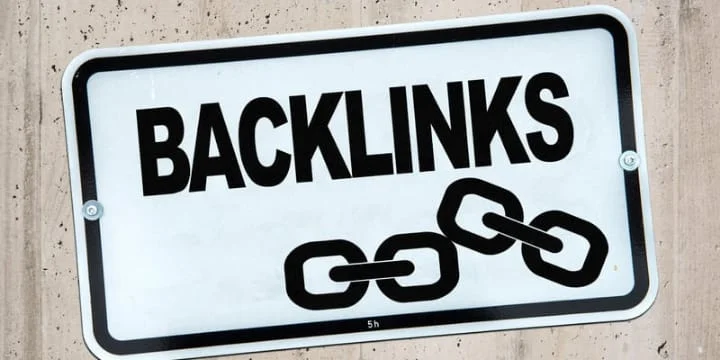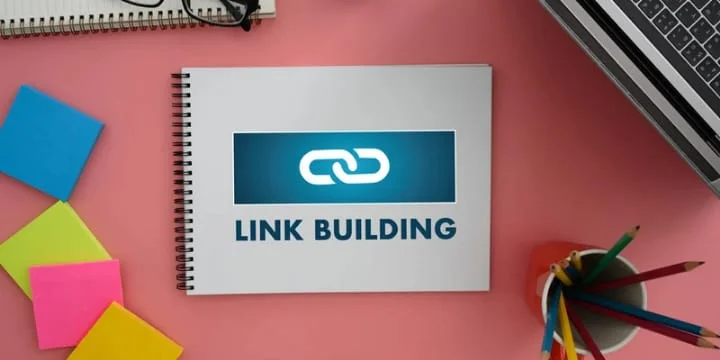Struggling to get your website noticed on Google? You’re not alone. In the competitive world of online marketing, having a beautiful website and great content often isn’t enough. You need to prove your worth to search engines, and that’s where backlinks come in.
Backlinks—when other websites link back to yours—are like votes of confidence in the eyes of search engines. They tell Google that your content is valuable, relevant, and worthy of a higher rank. But acquiring these backlinks is easier said than done. In this post, we’ll break down some proven link-building strategies that can help you climb the search engine rankings.
Are you ready to unlock the potential of backlinks and take your SEO game to the next level? Let’s get started.
What is Link Building?
Link building is the process of acquiring hyperlinks from other websites to your own. A hyperlink (commonly referred to as a link) is a way for users to navigate between pages on the internet. Search engines like Google use these links to crawl the web—they follow the links between the individual pages on your website and the links between entire websites.
But link building isn’t just about helping search engines discover your content; it’s about signaling the quality and relevance of your site. When authoritative websites link to your content, it’s like getting a thumbs-up from a trusted source. This is why backlinks are considered one of the most important factors in search engine optimization (SEO). The more high-quality backlinks you have, the more likely your site is to rank higher in search engine results pages (SERPs).
In essence, link building is a way of increasing your site’s authority and visibility by earning the trust and endorsement of other reputable sites. But not all links are created equal, and how you go about acquiring them can make or break your SEO efforts.
Importance of Backlinks in SEO
Backlinks are more than just hyperlinks; they’re a crucial part of the SEO puzzle. Here’s why:

1. Google’s Trust Signal
Google’s algorithm considers backlinks as a major trust signal. When multiple reputable websites link to your content, it indicates to Google that your site is a reliable source of information. This can significantly boost your website’s credibility, leading to higher search engine rankings.
2. Enhanced Organic Ranking
Websites with a strong backlink profile tend to rank higher in search engine results. Backlinks help search engines understand the relevance of your content for specific keywords. The more high-quality backlinks you have, the better your chances of ranking for competitive keywords.
3. Referral Traffic
Backlinks not only improve your search rankings but also drive referral traffic. When users click on a link to your site from another website, they’re directed to your page, potentially increasing your audience and customer base. High-quality backlinks from relevant sites can bring highly targeted traffic, which is more likely to convert.
4. Building Relationships and Authority
Acquiring backlinks often involves outreach to other websites and influencers in your niche. This process not only helps you earn links but also builds relationships with key players in your industry. Over time, these connections can establish your website as an authority within your niche.
5. Faster Indexing
Search engines use backlinks to discover new content. If your website is newly launched or you’ve published a new page, having backlinks can help search engines find and index your content faster, making it available to users sooner.
In summary, backlinks are a powerful tool in your SEO arsenal. They signal trust, enhance rankings, drive traffic, build authority, and speed up indexing. But remember, the quality of the backlinks is just as important as the quantity. Next, we’ll dive into the differences between white hat and black hat link-building techniques, so you can steer clear of strategies that might do more harm than good.
White Hat vs. Black Hat Link Building
When it comes to link building, not all strategies are created equal. The methods you choose can have a significant impact on your site’s reputation and long-term success. This is where the concepts of White Hat and Black Hat link building come into play.

White Hat Link Building
White Hat link building refers to ethical, legitimate strategies that align with Google’s guidelines. These methods focus on providing value to users and earning backlinks naturally, rather than manipulating search engines.
Key Characteristics of White Hat Link Building:
- Quality Content Creation: Producing high-quality, valuable content that others naturally want to link to.
- Guest Blogging: Writing informative, well-researched articles for reputable websites in your industry.
- Outreach and Relationship Building: Reaching out to bloggers, journalists, and influencers to share your content and potentially earn a link.
- Broken Link Building: Identifying broken links on other websites and suggesting your content as a replacement.
White Hat strategies are considered the best practice for sustainable SEO. They help build a strong, authoritative online presence over time without risking penalties from search engines.
Black Hat Link Building
Black Hat link building, on the other hand, involves deceptive practices that violate Google’s guidelines. These methods aim to manipulate search engine rankings by creating a false sense of authority.
Key Characteristics of Black Hat Link Building:
- Buying Links: Purchasing backlinks from websites or link farms, often resulting in low-quality or irrelevant links.
- Spammy Commenting: Posting links in the comment sections of unrelated or low-quality blogs purely to get backlinks.
- Private Blog Networks (PBNs): Creating a network of websites solely to link back to your main site, giving the appearance of widespread endorsement.
- Cloaking and Sneaky Redirects: Showing one version of a webpage to users and another to search engines to manipulate rankings.
While Black Hat techniques might yield quick results, they come with significant risks. Google actively penalizes websites that engage in these practices, which can result in severe drops in rankings or even complete removal from search engine results.
Why Choose White Hat Over Black Hat?
Choosing White Hat over Black Hat strategies is a long-term investment in your website’s health and reputation. While it may take more time and effort, White Hat link building fosters trust with search engines and users alike. The result? Sustainable growth in rankings, traffic, and authority.
Next, we’ll explore some proven White Hat strategies that can help you acquire high-quality backlinks and boost your search engine rankings the right way.
Proven Strategies to Acquire High-Quality Backlinks
Acquiring high-quality backlinks requires effort, creativity, and a strategic approach. Below are some effective White Hat link-building strategies that can help you secure valuable backlinks and enhance your search engine rankings.

1. Guest Blogging
Guest blogging remains one of the most effective ways to earn high-quality backlinks. By contributing well-researched and insightful articles to reputable blogs in your industry, you can reach new audiences and build your authority.
How to Get Started:
- Identify Relevant Blogs: Look for blogs that align with your niche and have a strong readership. Tools like Ahrefs or SEMrush can help you find blogs that accept guest posts.
- Pitch Ideas: Craft personalized pitches that highlight your expertise and propose topics that would benefit the blog’s audience.
- Create Valuable Content: Write high-quality, original content that offers real value to the readers. Include a natural link back to your site within the content or in your author bio.
2. Broken Link Building
Broken link building involves finding broken links on other websites and offering your content as a replacement. This strategy helps site owners fix issues on their site while earning you a valuable backlink.
How to Get Started:
- Find Broken Links: Use tools like Check My Links (a Chrome extension) or Ahrefs to find broken links on websites within your niche.
- Create or Identify Relevant Content: Ensure you have content that matches the topic of the broken link, or create new content if needed.
- Reach Out to the Website Owner: Politely inform the site owner about the broken link and suggest your content as a replacement.
3. The Skyscraper Technique
The Skyscraper Technique is all about improving upon existing popular content. The idea is to find top-performing content in your niche, create something even better, and then reach out to those who have linked to the original content.
How to Get Started:
- Research Popular Content: Use tools like BuzzSumo or Ahrefs to identify content in your niche that has a high number of backlinks.
- Create Superior Content: Improve upon the original content by making it more comprehensive, up-to-date, or visually appealing.
- Outreach for Backlinks: Contact the sites that linked to the original content, showing them your improved version and suggesting they link to it instead.
4. Outreach to Influencers
Building relationships with influencers in your industry can lead to high-quality backlinks. When influencers share your content or mention your brand, it can result in valuable links from their websites and social channels.
How to Get Started:
- Identify Key Influencers: Look for influencers who are active in your niche and have a strong online presence.
- Engage with Their Content: Start by engaging with their content—comment on their posts, share their articles, and build a rapport.
- Pitch Your Content: Once you’ve established a relationship, reach out with content that you think would be valuable to their audience. Be clear about how it benefits them and their followers.
5. Utilizing Resource Pages
Resource pages are pages on websites that curate valuable links to tools, guides, and content on a specific topic. Getting your content featured on these pages can earn you a high-quality backlink.
How to Get Started:
- Find Relevant Resource Pages: Use search queries like “keyword + inurl
” to find resource pages in your niche. - Create or Identify High-Value Content: Make sure you have content that genuinely offers value and fits the theme of the resource page.
- Reach Out to the Site Owner: Politely suggest your content as a valuable addition to their resource page, explaining why it would benefit their audience.
These strategies, when executed thoughtfully, can help you build a robust backlink profile that not only boosts your SEO but also enhances your site’s authority and reach.
Tools and Resources for Effective Link Building
Link building can be a time-consuming and complex task, but with the right tools and resources, you can streamline the process and achieve better results. Below are some of the most effective tools that can help you with everything from finding link opportunities to tracking your backlinks.

1. Ahrefs
Ahrefs is one of the most powerful tools for link building. It offers a comprehensive backlink analysis, allowing you to see who is linking to your competitors, identify broken links, and find guest blogging opportunities.
Key Features:
- Site Explorer: Analyze your competitors’ backlink profiles and see where they’re getting their links from.
- Content Explorer: Find high-performing content in your niche that you can improve upon or use for the Skyscraper Technique.
- Broken Link Checker: Identify broken links on your site and others, giving you opportunities for outreach.
2. SEMrush
SEMrush is an all-in-one SEO tool that provides valuable insights into your backlink profile, keyword rankings, and overall site health. It’s particularly useful for finding new link-building opportunities.
Key Features:
- Backlink Audit: Monitor your backlink profile to ensure you’re getting quality links and avoid harmful ones.
- Link Building Tool: Generate a list of link-building prospects based on your competitors’ backlinks and outreach opportunities.
- Outreach Management: Track your outreach efforts directly within SEMrush, making it easier to manage campaigns.
3. Moz Link Explorer
Moz Link Explorer is another excellent tool for discovering link opportunities and monitoring your backlink profile. It’s user-friendly and provides a clear picture of your site’s link health.
Key Features:
- Backlink Analysis: Explore your site’s backlink profile, including link quality and spam score.
- Link Intersect: Find sites that link to your competitors but not to you, creating potential outreach opportunities.
- Domain Authority (DA): Assess the strength of your website or any other based on Moz’s Domain Authority metric.
4. Hunter.io
Hunter.io is a handy tool for finding email addresses, making it easier to reach out to site owners for guest blogging, broken link building, and other outreach efforts.
Key Features:
- Email Finder: Quickly find email addresses associated with any domain.
- Email Verification: Ensure that the email addresses you’ve found are valid and up-to-date.
- Outreach Campaigns: Use Hunter to manage and automate your email outreach campaigns.
5. BuzzSumo
BuzzSumo is an excellent tool for content discovery and influencer outreach. It helps you find trending content, identify influencers in your niche, and track content performance.
Key Features:
- Content Analysis: Discover the most shared content in your niche, which can inspire your own link-building content.
- Influencer Identification: Find key influencers who are sharing content similar to yours, making them ideal candidates for outreach.
- Content Alerts: Get alerts when new content is published on specific topics, helping you stay on top of new opportunities.
6. HARO (Help A Reporter Out)
HARO connects journalists with expert sources. By signing up as a source, you can receive daily requests from journalists looking for expert quotes and insights. If your contribution is published, you’ll often earn a backlink from a reputable news site.
Key Features:
- Source Opportunities: Receive requests from journalists in your industry who are looking for expert commentary.
- Link Building: When your quotes or insights are used, you’ll typically get a backlink from the publication.
These tools and resources are invaluable for anyone serious about link building. They not only help you find opportunities but also ensure that your efforts are organized, effective, and aligned with best practices.
How to Avoid Google Penalties from Bad Backlinks
While building backlinks is crucial for improving your search engine rankings, it’s equally important to ensure that the links you acquire are high-quality and compliant with Google’s guidelines. Bad backlinks can do more harm than good, potentially leading to severe penalties from Google. Here’s how to avoid falling into the trap of harmful backlinks.

1. Understand What Constitutes a Bad Backlink
Bad backlinks are those that violate Google’s guidelines or come from low-quality, spammy websites. Here are some red flags to watch out for:
- Links from Low-Quality Sites: Websites with little to no original content, poor design, or a high number of outbound links are considered low-quality.
- Paid Links: Purchasing links is against Google’s policies. If you’re caught buying links, your site could be penalized.
- Over-Optimized Anchor Text: If the anchor text for your backlinks is overly optimized with exact-match keywords, it can look unnatural to Google.
- Links from Irrelevant Sites: Backlinks should come from sites that are relevant to your industry. Links from unrelated niches can raise red flags.
2. Regularly Audit Your Backlink Profile
Regularly monitoring your backlink profile is essential for identifying and addressing any potentially harmful links. Tools like Ahrefs, SEMrush, and Moz Link Explorer can help you keep track of your backlinks and spot any issues.
Steps to Audit Your Backlink Profile:
- Use a Backlink Checker: Start by using a tool like Ahrefs or SEMrush to generate a report of all the backlinks pointing to your site.
- Analyze Link Quality: Look for links from spammy or low-quality websites. Check the domain authority (DA) of the linking sites and consider the relevance of the content.
- Identify Over-Optimized Anchor Text: If you see a lot of backlinks with exact-match anchor text, this could be a red flag.
3. Disavow Toxic Backlinks
If you identify harmful backlinks during your audit, you can disavow them using Google’s Disavow Tool. This tool allows you to inform Google that you don’t want certain links to be considered when evaluating your site.
Steps to Disavow Toxic Backlinks:
- Create a Disavow File: List all the URLs or domains you want to disavow in a text file.
- Submit the File to Google: Upload the file to Google’s Disavow Tool via the Google Search Console.
- Monitor Your Rankings: After disavowing toxic links, keep an eye on your rankings to ensure there are no negative impacts.
4. Focus on Earning, Not Manipulating, Backlinks
The best way to avoid penalties is to focus on earning backlinks naturally. This means creating high-quality content that others want to link to, building relationships with influencers, and avoiding any shortcuts or manipulative tactics.
Tips for Earning Natural Backlinks:
- Create Link-Worthy Content: Invest in high-quality, original content that provides real value to your audience. This can include how-to guides, infographics, casestudies, or comprehensive industry reports. The better your content, the more likely it is to attract natural backlinks.
- Build Relationships: Engage with others in your industry. Comment on blogs, participate in forums, and attend industry events. Building genuine relationships can lead to natural link-building opportunities.
- Be Patient and Persistent: Earning high-quality backlinks takes time. Stay patient and keep producing valuable content while nurturing your industry connections.
5. Avoid Participating in Link Schemes
Google defines link schemes as any tactic designed to manipulate a site’s ranking in Google’s search results. This includes buying links, exchanging links excessively, and using automated programs to create links. Engaging in these practices can lead to penalties.
Examples of Link Schemes to Avoid:
- Excessive Link Exchanges: While exchanging links with a partner site occasionally is fine, doing it excessively can raise suspicions.
- Automated Link Building: Avoid using bots or automated tools that promise to generate thousands of links in a short time.
- Hidden Links: Adding hidden links within your content (such as white text on a white background) to manipulate rankings is considered a violation of Google’s guidelines.
6. Stay Updated with Google’s Guidelines
Google’s algorithm is constantly evolving, and staying informed about updates is essential to avoid penalties. Regularly reviewing Google’s Webmaster Guidelines will help you stay on the right side of the rules.
How to Stay Informed:
- Follow Google’s Webmaster Blog: Google regularly posts updates and tips for webmasters, including changes to its algorithms and guidelines.
- Attend SEO Conferences: Conferences and webinars often feature experts who can provide insights into the latest SEO best practices.
- Engage with the SEO Community: Join online communities, forums, and social media groups where SEO professionals discuss updates and share advice.
By focusing on earning high-quality, relevant backlinks and avoiding manipulative practices, you can protect your site from Google penalties and build a robust, sustainable link profile.
Case Studies: Successful Link Building Campaigns
To understand how effective link-building can elevate your search engine rankings, let’s look at a few real-world examples of successful campaigns. These case studies highlight the strategies used and the results achieved, providing actionable insights you can apply to your own efforts.

**1. Brian Dean’s Skyscraper Technique
Background: Brian Dean, the founder of Backlinko, pioneered the Skyscraper Technique, a link-building strategy that involves finding popular content in your niche, creating something even better, and then reaching out to those who linked to the original content.
Strategy:
- Research: Brian started by identifying a piece of content with a high number of backlinks in his niche—specifically, an article about Google’s ranking factors.
- Creation: He then created a more comprehensive, updated guide covering Google’s ranking factors in greater detail.
- Outreach: Brian contacted all the sites that had linked to the original article, informing them of his improved version and suggesting they link to his guide instead.
Results:
- Increased Backlinks: His outreach efforts resulted in a significant number of backlinks from high-authority sites.
- Higher Rankings: The improved guide not only outperformed the original article but also ranked highly for competitive keywords, driving substantial organic traffic to his site.
Key Takeaway: The Skyscraper Technique is highly effective because it leverages existing interest in a topic. By creating superior content and strategically reaching out to relevant sites, you can earn high-quality backlinks and improve your rankings.
**2. Moz’s Data-Driven Content
Background: Moz, a leader in SEO software, utilized data-driven content to attract high-quality backlinks. Their strategy focused on creating in-depth studies and reports based on proprietary data.
Strategy:
- Data Collection: Moz collected data from its SEO tools and analyzed trends, correlations, and patterns that would be valuable to its audience.
- Content Creation: They then published detailed reports, complete with charts, graphs, and actionable insights, making the content highly shareable.
- Promotion: Moz promoted these reports through their blog, social media channels, and email newsletters, encouraging other sites to link to their research.
Results:
- Authoritative Backlinks: The unique, data-driven content attracted links from reputable sites across the digital marketing industry.
- Industry Recognition: The success of these reports helped solidify Moz’s reputation as an authority in the SEO space, driving more traffic and engagement.
Key Takeaway: Data-driven content is a powerful tool for link building. By providing unique insights that others can’t easily replicate, you can attract backlinks from authoritative sources and establish your site as a go-to resource.
**3. Groupon’s Broken Link Building
Background: Groupon, the online marketplace, implemented a broken link-building strategy to boost its visibility and authority in local markets. The company targeted local bloggers and websites with broken links in their content.
Strategy:
- Identifying Broken Links: Groupon’s SEO team used tools like Ahrefs to identify broken links on local business and community websites.
- Content Matching: They then matched the broken links with relevant content on Groupon’s website, such as local deals or business listings.
- Outreach: The team reached out to the site owners, informing them of the broken links and suggesting they link to Groupon’s content as a replacement.
Results:
- Increased Local Backlinks: This strategy helped Groupon acquire a large number of local backlinks, strengthening its presence in local search results.
- Improved Local SEO: The influx of local backlinks contributed to better rankings for location-specific keywords, driving more local traffic to the site.
Key Takeaway: Broken link building is a win-win strategy—it helps other site owners fix issues on their websites while earning you valuable backlinks. Targeting local or niche sites can be particularly effective in enhancing your SEO.
These case studies demonstrate that with the right strategies, link building can significantly boost your site’s authority and search engine rankings. Whether you’re using the Skyscraper Technique, creating data-driven content, or capitalizing on broken link opportunities, the key is to provide value and be strategic in your outreach efforts.
Measuring the Impact of Backlinks on Search Engine Rankings
After implementing your link-building strategies, it’s crucial to measure their effectiveness. Tracking the impact of backlinks on your search engine rankings will help you understand what’s working and where you might need to adjust your approach. Here’s how you can measure and analyze the impact of your backlink efforts.

1. Track Your Search Engine Rankings
One of the most direct ways to measure the impact of backlinks is by monitoring your search engine rankings for targeted keywords.
How to Track Rankings:
- Use SEO Tools: Tools like Ahrefs, SEMrush, and Moz allow you to track keyword rankings over time. Set up tracking for your primary and secondary keywords to see how they perform after you acquire new backlinks.
- Monitor Ranking Changes: Pay attention to any significant changes in your rankings after you secure high-quality backlinks. If you see a positive shift, it’s likely that the backlinks are contributing to this improvement.
2. Analyze Your Backlink Profile
Understanding your backlink profile helps you assess the quality and quantity of the backlinks you’ve acquired. This analysis will give you insights into the types of links that are most beneficial to your site’s SEO.
How to Analyze Your Backlink Profile:
- Backlink Reports: Use tools like Ahrefs, SEMrush, or Google Search Console to generate reports on your backlink profile. These reports will show you the number of backlinks, referring domains, and the quality of the links.
- Domain Authority (DA): Check the domain authority of the sites linking to you. High-DA sites contribute more to your SEO than low-DA sites.
- Anchor Text Distribution: Review the anchor text used in your backlinks. A natural distribution of branded, generic, and keyword-rich anchor texts is ideal for a healthy backlink profile.
3. Monitor Organic Traffic Changes
Backlinks can drive more organic traffic to your site. Monitoring changes in your organic traffic can help you determine if your link-building efforts are paying off.
How to Monitor Organic Traffic:
- Google Analytics: Set up and use Google Analytics to track organic traffic to your site. Look for trends over time, particularly after you’ve gained new backlinks.
- Landing Page Traffic: Analyze traffic to specific landing pages that received new backlinks. An increase in visits to these pages suggests that the backlinks are driving traffic.
4. Measure Referral Traffic
In addition to organic traffic, backlinks can generate referral traffic—visitors who click on the links to your site from other websites.
How to Measure Referral Traffic:
- Referral Reports: Use Google Analytics to view your referral traffic sources. Identify which backlinks are driving the most traffic and from which websites.
- Engagement Metrics: Analyze how referral visitors engage with your site. Metrics like bounce rate, pages per session, and average session duration can provide insights into the quality of the referral traffic.
5. Evaluate Conversion Rates
Ultimately, the goal of driving traffic through backlinks is to convert visitors into leads or customers. Tracking conversion rates from your backlink traffic will help you assess the true value of your link-building efforts.
How to Evaluate Conversion Rates:
- Set Up Goals in Google Analytics: Define and track specific conversion goals (e.g., newsletter signups, purchases, contact form submissions).
- Compare Conversion Rates: Compare the conversion rates of traffic from different backlinks. High-converting backlinks are not just bringing traffic, but also the right kind of visitors who are more likely to take action.
6. Regularly Review and Adjust Your Strategy
Link building is not a one-time effort; it requires ongoing monitoring and adjustment. Regularly reviewing the impact of your backlinks and adjusting your strategy accordingly will ensure continuous improvement in your search engine rankings.
How to Review and Adjust:
- Monthly Reports: Generate monthly reports on your rankings, traffic, and conversions. Look for trends and identify which strategies are yielding the best results.
- A/B Testing: If you’re experimenting with different link-building strategies, use A/B testing to compare their effectiveness.
- Adapt to Algorithm Updates: Stay informed about changes to Google’s algorithm and adjust your link-building strategy to remain compliant and effective.
By carefully measuring and analyzing the impact of your backlinks, you can optimize your link-building strategy to maximize its effectiveness. This ongoing evaluation process will help you maintain and improve your search engine rankings over time.
Conclusion
Link building is an essential component of a successful SEO strategy. By acquiring high-quality backlinks, you can enhance your website’s authority, drive more traffic, and achieve better search engine rankings. Whether you’re leveraging guest blogging, the Skyscraper Technique, or outreach to influencers, the key is to focus on ethical, value-driven approaches that align with Google’s guidelines.
Remember, link building is a marathon, not a sprint. By consistently applying these proven strategies and measuring their impact, you’ll gradually build a robust backlink profile that supports long-term success. Now it’s time to put these strategies into action and watch your site climb the ranks.













